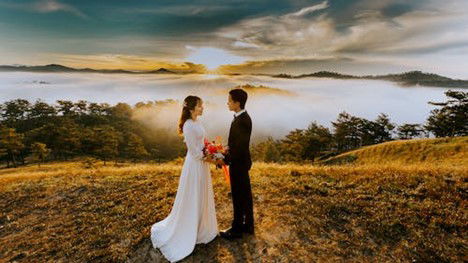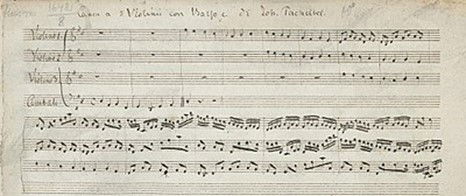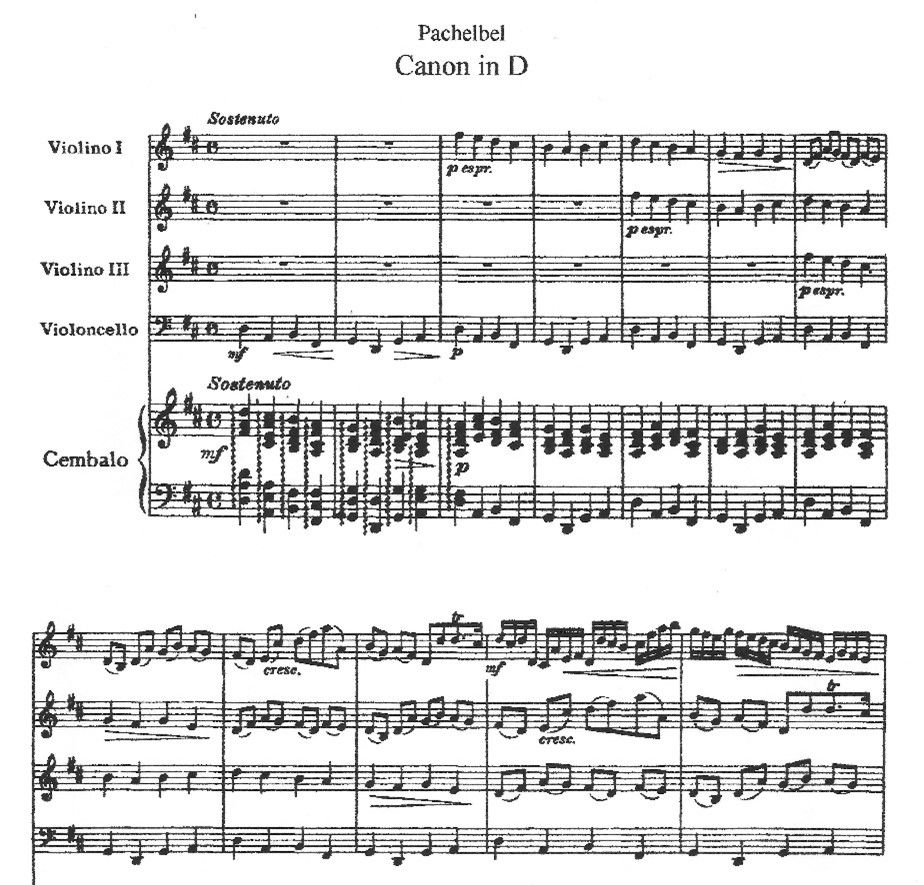Wedding Music Arrangements to Make You Weep for Joy

Love is in the air. The guests are arriving. The groom is ready and nervous, the bride’s friends are helping her to put on the finishing touches. The string quartet starts playing. People stop talking and start looking uncomfortable. Finally, someone turns to the person in the next seat, “What in the world is THAT?” Others are asking, “Who hired THEM?” and “What kind of music IS that?”
It may be a bit of an exaggeration, but it’s happened more than once. Yes, it could be the players, it could be the weather or even the phase of the moon (the moon is an exaggeration).
However, it could be the arrangement. A wedding music arrangement can be tricky. Pachelbel wrote his Canon in D with the cellist playing the same notes over and over and over again. A string quartet, of course, plays it as written. Other arrangements of it often are as close as possible to the original. It’s a great song, but there MIGHT be another way to play it.
But, before we talk about a better way to play it, we want to be sure we know just what would make a wedding music arrangement to make you weep for joy, as the title suggests. It’s all about art. And, for now, we’ll concentrate on musical arts, although the concepts apply to all sorts of art.
There’s a big difference between music and musical art (or artful music, if you prefer). I checked to see how others define music.
All the definitions I looked at agree that music is organized sound, but they make a fundamental mistake in their definitions. They use the word “art” without a clear definition of what art is.
That’s because people in general and philosophers, artists, musicians and intellectuals of all sorts have been debating the meaning of art for centuries. An extremely distilled version of most of their views is this: art combines beauty and power (or strength).

This play between beauty and power is best played out as conflict and resolution. Think of a roller coaster. There’s the long climb to the top, the first dive, a few more ups and downs and maybe a loop. But there’s always the smooth, slow, level ending. It’s the same with music, visual art, even movies. If the roller coaster was basically flat, it’s no fun. If there were too many sharp ups and downs and turns, it would be too painful too enjoy.
That’s what art IS. Basic music, whether it is art or not, can be an expression of the artist or communicate some message from the artist. That’s what it DOES, and has little to do with what it IS.
Now, what do the words Beauty and Power mean? Since you don’t want to read a 500 page treatise on their definitions, let’s just say that Beauty is an objective term, it doesn’t reside in the eye of the beholder. Something that is beautiful conveys a positive sense of pleasure or satisfaction to the beholder / listener. For a good definition of positive, Philippians 4:8 presents a great list of positive attributes (whatever is, true, honest, just, pure, etc.)
Power is a bit simpler. It infers the ability to do things that others can’t do, including wedding music that can make a grown man cry. Here are more details about Beauty and Power in my article Is It Art or Just Music?
What Goes Into That Wedding Music Arrangement that Makes Me Weep For Joy?
A great wedding music arrangement combines these two elements, beauty and power. If there’s too much of the beauty element, the music is syrupy and boring. Too much power makes the music, at least, not very romantic, and can be simply very irritating – not great wedding music.
Now, let’s say that the bride wants Pachelbel’s Canon in D played at their wedding. She has hired a string quartet, and the original was written for a string quartet. Problem solved. Or is it? She likes the original, but she wants something that no-one else has had played at their wedding. Now what?
If she had wanted Bach’s “Jesu, Joy of Man’s Desiring”, someone would have had to do what you might call a “Compression” arrangement for her string quartet because Bach wrote it for a lot more than four musicians. For that, the arranger would have to assign the most prominent themes to the four instruments.
However, the bride wants a different but appropriate version of the Canon in D. As you can see from this copy of the Canon, he wrote the cello part once and left the rest of the part blank because the cellist just played it over and over and over… However, the other three parts are played as a fugue (a complicated round (think “Row, Row, Row Your Boat”)).

I’ve written a similar piece for string quartet called Jewels and Treasures, but instead of relegating the cello to perpetual repetition, I gave each instrument a chance to play the melody, while continually adding more counter-melodies. I employed a number of musical “devices” to create what I hope will meet the criteria for art.
First, I started simply, like the long climb on the roller coaster. But, instead of a steep plunge, the piece continues to develop interest by filling out the accompaniment part. Then, it does a few ups and downs with a new counter-melody before the last time through, in which it adds yet another counter-melody that the first violin plays “in the clouds” while the cello warmly plays the melody.
I tried for a 60/40 split between the beauty and the power. The conjunct melody (mostly notes next to each other), the complimentary harmonies and motion of those harmonies added to the beauty. The power element was achieved by the leading motion of the counter-melodies and the bass line, the gradual increase in volume and the expanding range of the instruments.

A similar arrangement could be done with Pachelbel’s Canon. Here’s a more readable score to look at. First, imagine the cello part being given some motion, like dotted eighth and sixteenth notes instead of plodding quarter notes. Also, imagine some of the busiest parts being played by the viola or cello while the simpler parts that the cello played being played “in the clouds” by the first violin.
These things would be a good start for the “different” arrangement of the Canon that our bride wanted. What else could be done to increase both beauty and power? The first or second violin parts could be played an octave up in some places, probably toward the end.
Because the Canon goes through 28 variations, I would use a key change or two. It could start in D, move to E (violins are easier to play in sharp keys), then maybe slide back down to D (I’d have to try it to see) and then move up to G for the last one or two variations.
For some extra “frills”, I could add some short trills or mordents, especially in the slower parts, to the violins and viola. If the bride is daring, the style could be altered for some of the piece by adding some mild syncopation, especially to the keyboard part (harpsicord, marked Cembalo) and cello part. There are even some rock rhythms that, if used sparingly, could add some flair to the piece. But, we’d have to ask the bride about that.
The long and the short of it is this. In order to create wedding music arrangements to make you weep for joy, the music has to be art. The beauty and strength elements have to be balanced well, changing the ratio of one to the other throughout the piece. That way, the music will match the complimentary qualities of beauty and strength in the bride and groom.
Salt Cellar Creations creates the beauty and power that go into a well-crafted original composition or arrangement. We have a growing library of music for all occasions. Explore everything that Salt Cellar Creations has to offer HERE. For weddings in particular, check out the great String Arrangements. Although designed for String Orchestras, they work beautifully for wedding string quartets / quintets.
SCC can also compose an original piece for you or do a custom arrangement for you. There are two ways that this can be done; one is much more affordable than the other. And SCC is always looking for ideas of pieces to arrange or suggestions for original pieces.
We have sold music not only in the US but in Canada, the United Kingdom, France, Australia, and New Zealand. Please visit the WEBSITE or CONTACT US to let us know what we can do for you!